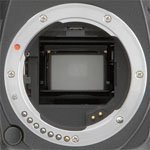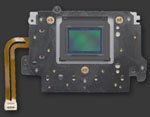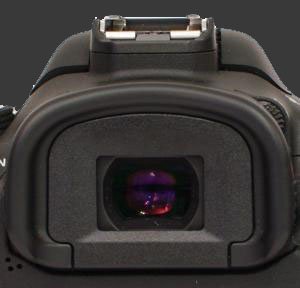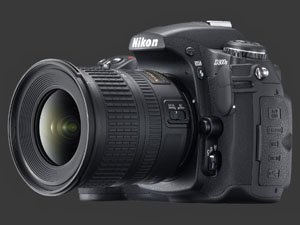Weather-Sealed DSLR Camera Comparison

 The most significant difference between these DSLR cameras is the lens mount. The lens mount determines the usable selection of lenses available. Each camera manufacturer makes several lenses uniquely available for their lens mount. Third party manufacturers, considered to be of lower cost and generally lower quality, make lenses which are available in various mounts. Anyone with a collection of existing lenses must consider the cost of replacing the lenses they use the most.
The most significant difference between these DSLR cameras is the lens mount. The lens mount determines the usable selection of lenses available. Each camera manufacturer makes several lenses uniquely available for their lens mount. Third party manufacturers, considered to be of lower cost and generally lower quality, make lenses which are available in various mounts. Anyone with a collection of existing lenses must consider the cost of replacing the lenses they use the most.
 Another major difference is built-in image stabilization. All current Pentax and Olympus DSLRs have it. It is primarily a cost saving feature. Stabilized lenses can cost up to 30% more than their equivalent non-stabilized counter-parts. With built-in stabilization, the cost of stabilization is saved for all lenses. Also, built-in stabilization applies to all lenses. Some lenses such as fisheye lenses, tilt-shift lenses and ultra-wide lenses have no stabilized counter parts. Therefore the only way to get such lens stabilized is by using built-in stabilization.
Another major difference is built-in image stabilization. All current Pentax and Olympus DSLRs have it. It is primarily a cost saving feature. Stabilized lenses can cost up to 30% more than their equivalent non-stabilized counter-parts. With built-in stabilization, the cost of stabilization is saved for all lenses. Also, built-in stabilization applies to all lenses. Some lenses such as fisheye lenses, tilt-shift lenses and ultra-wide lenses have no stabilized counter parts. Therefore the only way to get such lens stabilized is by using built-in stabilization.
While all cameras compared here are weather-sealed, there are differences in the protection provided. The Pentax K-7 leads the pack with splash-proof weather-seals and added resistance to temperatures below freezing until -10C (14F). At the other end of the spectrum, the most water the D300S can take is moisture.
 One of the most important ergonomics aspect of a camera is its viewfinder. The higher the magnification, the easiest it is to judge focus and see details through the viewfinder. Taking into account differences in sensor size, the highest magnification viewfinders belong to the K20D, D300S, 7D and K-7, all within a hair of each other. Since all these cameras but the K200D are aimed at advanced users, the K200D is the only one to feature a single control-wheel.
One of the most important ergonomics aspect of a camera is its viewfinder. The higher the magnification, the easiest it is to judge focus and see details through the viewfinder. Taking into account differences in sensor size, the highest magnification viewfinders belong to the K20D, D300S, 7D and K-7, all within a hair of each other. Since all these cameras but the K200D are aimed at advanced users, the K200D is the only one to feature a single control-wheel.
It is a relatively new feature to have a digital level to help taking horizontal pictures. Without this feature, a spirit-level can be placed in the camera hot-shoe. The disadvantage is that such a level is not visible while composing through the viewfinder. The newer of these cameras have built-in levels but the K-7 puts in an extra feature that automatically corrects tilt by rotating the sensor itself.
Given the variety of these weather-sealed DSL cameras, there are quite a few differences in the basic feature set. Resolution goes from 10 megapixels, for the E-3 and K200D, all the way to 18 megapixels for the 7D. These sensor differ just as much in terms of ISO range with the K200D having a maximum ISO of 1600, the E-3 of 3200 and 7D of 12800, while the remaining models stop at 6400.
Half the models in this comparison are capable of shooting video, all at some HD resolution. The 7D has the highest HD video resolution of 1080p, with the K-7 having a non-standard 1536x1024 3:2 aspect ratio video mode and the D300s doing 720p.
The Canon 7D leads the pack in terms of continuous drive. It sustains up to 8 FPS for at least 126 JPEG images. At 7 FPS, the Nikon D300S is a close second at can shoot 100 images in JPEG. The E-3 and K-7 fall in the middle at around 5 FPS, although the E-3 has no shooting limit at that speed. The K-7 manages 40 JPEG at full-speed or an unlimited number at 3 FPS. The slowest units, the Pentax K20D and K200D, get 3 and 2.8 FPS respectively. Being an entry-level camera, the K200D can only shoot 4 image continuously, regardless of the image format used.
 The area of greatest difference between these models is their autofocus systems. While all 3 Pentax and the Olympus ones have 11 autofocus points, the Canon has 19 points and the Nikon has a whopping 51 points. If you belong to the group of photographers who only use a single point (the center), then you can count the difference null-and-void. Those who use a single point usually operate using focus-lock on the half-press or using the AF-On button and then recompose. More points are quite useful though for action photography when used in conjunction with tracking autofocus since the DSLR can follow a moving subjects across a greater range of points and has less change of losing a subject between two points.
The area of greatest difference between these models is their autofocus systems. While all 3 Pentax and the Olympus ones have 11 autofocus points, the Canon has 19 points and the Nikon has a whopping 51 points. If you belong to the group of photographers who only use a single point (the center), then you can count the difference null-and-void. Those who use a single point usually operate using focus-lock on the half-press or using the AF-On button and then recompose. More points are quite useful though for action photography when used in conjunction with tracking autofocus since the DSLR can follow a moving subjects across a greater range of points and has less change of losing a subject between two points.
The final major difference between these DSLRs is the use of standard AA batteries by the Pentax K200D. All other cameras rely on proprietary lithium-ion batteries instead. Not only does the K200D get more versatility out of this power-source but it also outdoes every other camera in terms of battery-life, taking up to 1100 shots on a single charge of 4 AAs. To obtain the same versatility at the expense of cost, bulk and weight, most of these cameras support an additional battery grip which can take 6 or 8 AA batteries.
Table 3 below shows the major differences between these DSLR cameras, highlighting where some cameras are better specified by a non-trivial margin.
Table 3 - Major Differences | ||||||
| Camera | Canon EOS 7D | Nikon D300S | Olympus E-3 | Pentax K-7 | Pentax K20D | Pentax K200D |
| Lens Mount | Canon EF/EF-S AF-Contacts |
Nikon F AF-Coupling AF-Contact |
Standard Four-Thirds | Pentax KAF2 AF-Coupling AF-Contact |
||
| Stabilization | None | None | Built-In | |||
| Weather Proofing | Dust/Splash | Dust/Moisture | Dust/Splash | Dust/Splash |
Dust/Splash | Dust/Splash |
| Effective VF Magnification Coverage |
|
0.626X 100% |
0.575X 100% |
0.613X 100% |
0.633x 95% |
0.567x 95% |
| Digital Level | 2-Axis | Virtual Horizon | None | Automatic Horizon Correction (Tilt) | None | None |
| Control Dials | 2 | 1 | ||||
| Continuous Drive JPEG Limit RAW Limit |
8 FPS 126 15 |
7 FPS 100 17 |
5 FPS Unlimited 19 |
5.2 FPS 40 15 |
3 FPS 38 14 |
2.8 FPS 4 4 |
| Focusing System | 19 Points All Cross Type |
51 Points 15 Cross Type |
11 Points | 11 Points 9 Cross Type |
||
| Max ISO | 12800 | 6400 | 3200 | 6400 | 6400 | 1600 |
| Image Resolution | 18 MP | 12 MP | 10 MP | 15 MP | 15 MP | 10 MP |
| Movie Resolution | 1920x1080 @ 30 FPS | 1280x720 @ 24 FPS | None | 1536x1024@ 30 FPS | None | None |
| Power | Proprietary Lithium-Ion | AA Batteries | ||||

